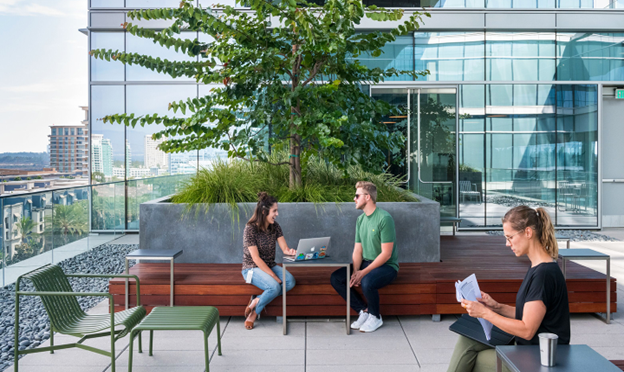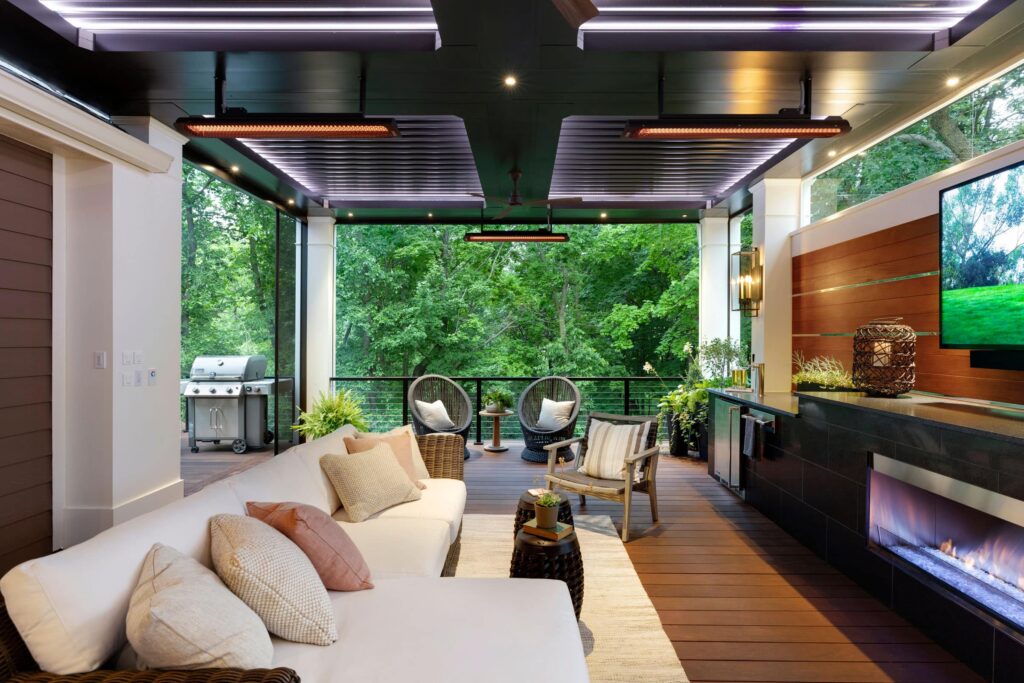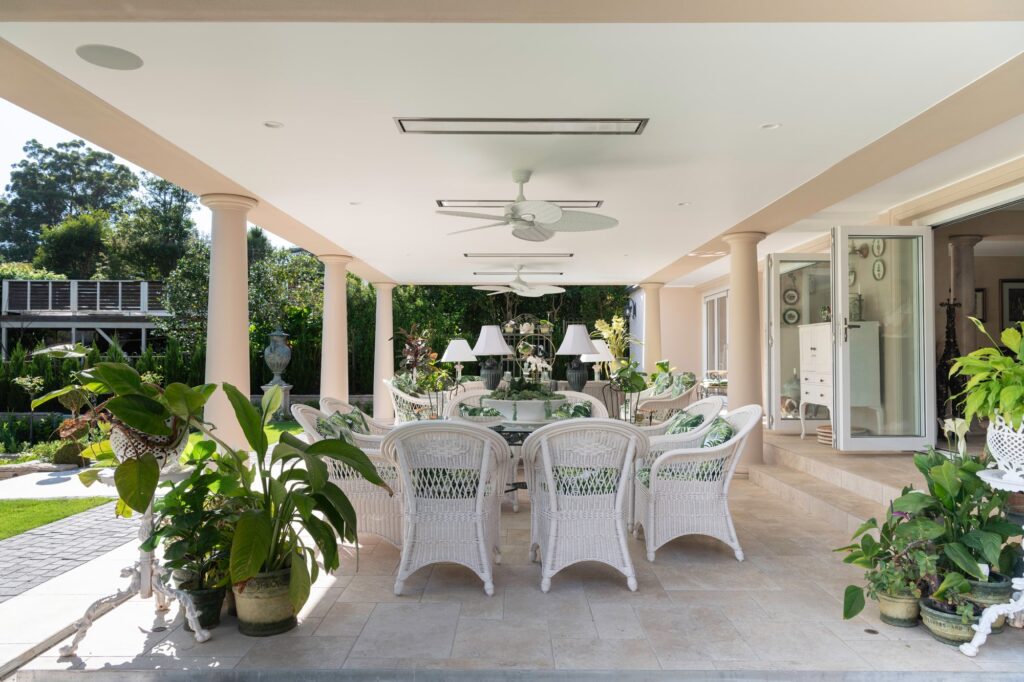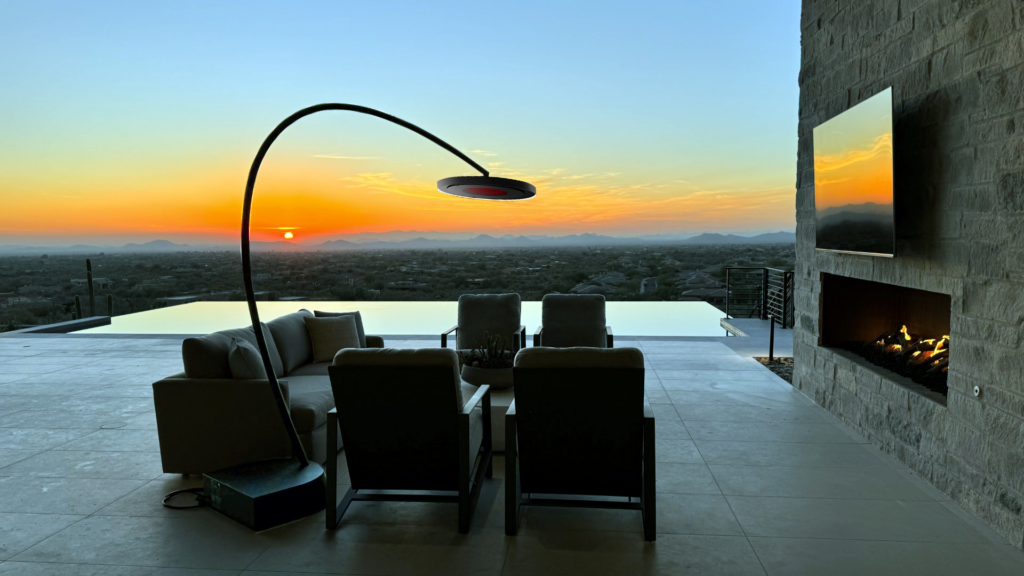Office design shapes employee collaboration and well-being. For architects and interior designers, the office extends far beyond functional layouts. Leading a revolution in office design, explore how these professionals are having a profound impact on the way people work, create, and thrive.
Architects and interior designers play a central role in crafting work environments that transcend the conventional, fostering innovation and harmonizing with the evolving needs of modern work culture. They are not only crafting visually appealing office environments but also boost productivity and employee satisfaction. In workplace design, designers are integrating shared spaces and technology while drawing inspiration from biophilia and sustainable approaches.
A key challenge for designers wanting to rethink office space design is thinking about flexibility: how do you plan for different office space changes over time, and how can designers work within the challenge of existing office buildings? To answer these questions, we’re looking at the future of shared spaces, diving into current changes, and discovering solutions from new amenities to outdoor work areas. Join us on a journey through the latest trends and opportunities as we explore how designers are creating the next generation of inspiring and functional office spaces.
What Are Shared Spaces Today?
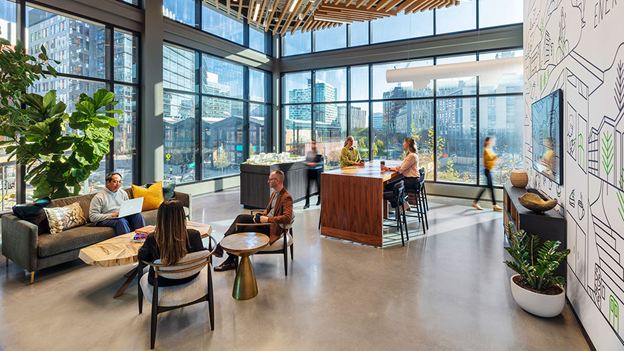
Gone are the days of rigid cubicles and closed-door offices; a transformative shift is underway as the very essence of office spaces undergoes a dynamic evolution. Architects and designers are steering away from conventional structures, embracing dynamic and flexible designs that prioritize collaboration, employee well-being, and innovation. This change illustrates how the workplace is not just a functional space, but a thriving ecosystem designed with a office hospitality approach, fostering a sense of comfort, engagement, and inspiration. In this office collaboration space, every nook and corner of the office becomes a potential hub for creativity, encouraging a seamless blend of work and well-being.
Shared spaces in contemporary office design have become the beating heart of the workplace, redefining how teams collaborate, interact, and find inspiration. According to Insightful Environments, after the global pandemic employees now say “the main reason they want to come back to the office is to be with other people, socialize and collaborate in ways that just aren’t possible remotely.” The International Journal of Research and Public Health notes how “design choices, including layout, lighting, and organization, directly impact an employee’s physical and mental well-being.
One key feature is the open-plan layout, where expansive areas devoid of traditional cubicles encourage spontaneous interactions among colleagues. These shared zones are carefully designed to promote a sense of community, breaking down hierarchical barriers and fostering collaborative working spaces, and usually offer smaller spaces within a larger room. From communal workstations to vibrant lounge areas, the modern office is a fluid landscape where employees can seamlessly transition between individual focus and group engagement.
These same shared spaces can be inside the office or outdoors. This evolution reflects a deeper understanding of the modern workforce’s needs, emphasizing flexibility, connectivity, and the creation of environments that nurture both individual productivity and collective creativity. Ensuring the well-being of employees and incorporating ergonomic considerations in these environments poses another opportunity, necessitating thoughtful design strategies that prioritize comfort and health-conscious workspaces.
Today’s Challenge for Office Designers
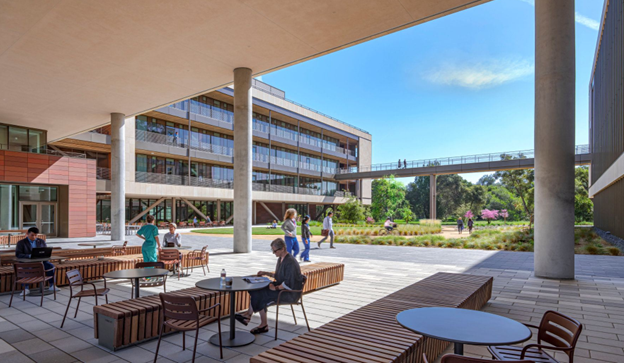
The future of shared spaces envisions a dynamic landscape where collaboration, flexibility, and inclusivity reign supreme. As Steelcase Research found in their recent workplace study, the key will be understanding the needs and expectations of office workers today, and to create flexibility for change. That flexibility supports community in the office. “Research measured community — using metrics around purpose, belonging, resilience, trust and inclusivity — and identified how community correlates to the workplace. Community and flexibility not only contributes to people’s wellbeing, it leads to better business outcomes as well.”
As the traditional boundaries between work, leisure, and communal activities continue to blur, shared spaces are evolving into multifunctional hubs that cater to diverse needs. Technology will play a pivotal role, seamlessly integrating physical and virtual collaboration tools to connect individuals. From co-working environments that foster innovation to community spaces designed for social interaction, the future holds a vision of shared spaces that transcend the confines of traditional office settings. These spaces will prioritize well-being, offering adaptable layouts, greenery, and thoughtful design elements that inspire creativity and nurture a sense of belonging.
At the same time, the imperative to meet sustainability goals in the face of environmental concerns places a considerable emphasis on incorporating eco-friendly practices and green building principles, including biophilia. The need for adaptability in design to cater to evolving work dynamics and unforeseen challenges presents an ongoing challenge, prompting architects to explore new design solutions.
Architects and designers navigate the dynamic landscape of office space changes by adopting forward-thinking strategies that accommodate flexibility and adaptability. Future-proofing designs involve incorporating modular and versatile elements, enabling seamless adjustments to meet evolving work dynamics and technological advancements. Additionally, designers focus on creating timeless and enduring aesthetics that transcend fleeting trends, ensuring the longevity of the space. When confronted with the challenge of existing office buildings, designers employ innovative retrofitting techniques to transform outdated structures into modern, functional spaces. This involves strategic space planning, reconfiguration of layouts, the integration of smart technologies, as well as extending the office space outdoors.
Guest-Centric Amenities: Outdoor Areas & Gathering Spaces
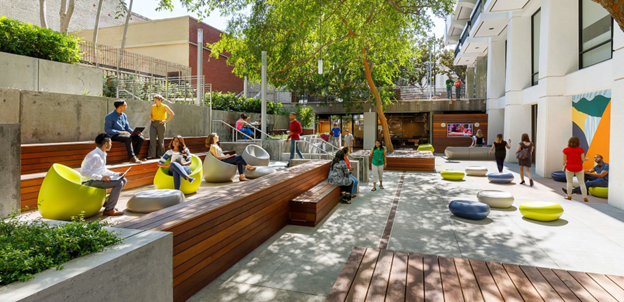
In a notable shift from conventional office setups, the trend towards outdoor workspaces is embracing a more comfortable and home-like ambiance. As Work Design Magazine noted in their report The Role of The Office in 2023 and Beyond, offices will become more like a home, a showroom, and a cultural center. This more guest-centric mindset and approach is becoming widespread. It extends beyond the physical, indoor spaces usually prescribed for work. Designers are reimagining outdoor environments to replicate the cozy familiarity of home, introducing elements such as comfortable seating, soft furnishings, and warm lighting that evoke a sense of relaxation.
These outdoor workspaces, whether in urban gardens, rooftop terraces, or scenic courtyards, are increasingly becoming extensions of the indoor experience. This is where amenities and gathering spaces make a real impact in the modern office. The aim is to create a seamless blend between professional productivity and the comfort associated with home life, offering a refreshing alternative for those seeking a harmonious work environment that transcends the traditional office confines. This transformation not only taps into the desire for a more inviting and personalized workspace but also underscores the evolving nature of work culture towards a balance of professionalism and the comforts of home.
Modern office designs often incorporate outdoor amenities to create a more pleasant and engaging work environment. These outdoor spaces aim to promote employee well-being, productivity, and overall satisfaction. Key outdoor amenities in modern office design may include:
Outdoor Workspaces:
Incorporating outdoor workspaces allows employees to work in a different environment, fostering creativity and collaboration. These spaces may include desks, tables, and seating arrangements suitable for work tasks.
Recreational Areas:
Outdoor recreational spaces, such as basketball or volleyball courts, can serve as places for physical activity and team-building exercises. These areas contribute to a healthy work-life balance and can boost morale.
Walking Paths and Jogging Trails:
Designing walking paths or jogging trails around the office campus encourages employees to stay active during breaks. These paths may wind through landscaped areas, providing a peaceful and scenic experience.
Café or Dining Spaces:
Outdoor cafés or dining spaces offer employees a change of scenery during lunch breaks. Comfortable seating, shade, and landscaping enhance the overall dining experience.
Outdoor Events Spaces:
Multi-functional outdoor spaces can be used for hosting company events, team-building activities, or social gatherings. These areas should be equipped with seating, heating for different climates and times of year, as well as lighting and possibly even audiovisual facilities.
Shade Structures:
Installing shade structures, such as pergolas, umbrellas, or awnings, helps create comfortable outdoor spaces, protecting employees from harsh sunlight and weather conditions.
Integrating outdoor spaces into office design is a consideration that transcends the conventional boundaries of the workplace. Beyond the tangible benefits of providing a breath of fresh air and exposure to natural light, this integration serves as a catalyst for improved employee well-being and heightened productivity. Outdoor spaces offer a rejuvenating escape from the confines of indoor environments, promoting relaxation, creativity, and a sense of connection with the surrounding environment.
Biophilia, New Products and What’s Next
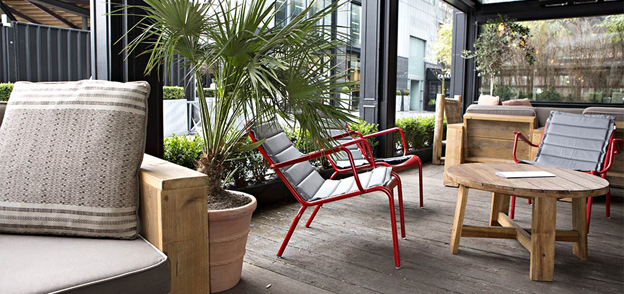
Biophilia is another key element reshaping office design. It encapsulates the innate human tendency to connect with nature. In the context of modern office design, biophilia involves integrating natural elements, such as plants, natural light, and organic materials, into the built environment to enhance well-being and productivity. This design approach recognizes the profound impact of nature on human psychology and strives to create workspaces that mimic natural settings. Biophilic design aims to alleviate stress, boost creativity, and improve overall mental health by fostering a connection with the outdoors.
Architects and designers are increasingly embracing biophilia in modern office design, introducing greenery, water features, and sustainable materials to create work environments that not only prioritize the physical and mental health of occupants but also contribute to a more harmonious and visually engaging workplace.
Outdoor work areas are witnessing a surge in popularity but are also accompanied by a range of key products and features designed to enhance comfort and functionality. Weather-resistant and durable furniture crafted from materials like teak or weather-resistant fabrics is gaining prominence, offering both comfort and longevity. Flexible shade solutions, such as umbrellas or retractable awnings, cater to varying weather conditions, while wireless charging stations and integrated power outlets ensure seamless connectivity in these al fresco workspaces.
Outdoor heaters emerge as another essential element, ensuring year-round usability by providing warmth during colder seasons. The integration of lush greenery, like potted plants or vertical gardens, not only adds aesthetic appeal but also contributes to the biophilic aspect of outdoor design, fostering a connection with nature. Altogether, these features create a harmonious and inviting outdoor work environment that aligns with the evolving preferences for flexible and nature-inspired workspaces.
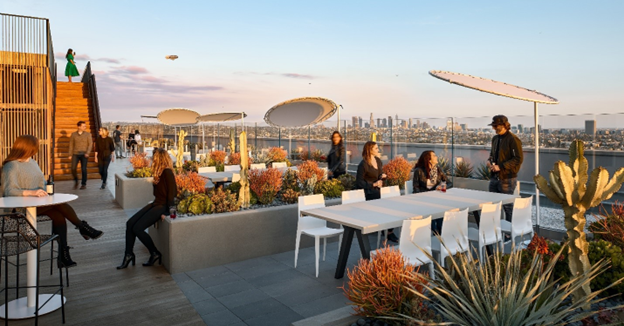
Architects and interior designers are charting a transformative course in shaping the future of office space design. Fueled by a commitment to innovation, adaptability, and well-being, these professionals are redefining work environments as dynamic hubs that seamlessly blend form and function. The shift towards open, collaborative workspace designs, integration of biophilic elements, and the implementation of outdoor work areas reflects a holistic approach to design that prioritizes employee satisfaction and productivity. Embracing the challenges of flexibility and changing expectations, architects and designers are crafting spaces that not only respond to the evolving needs of the workforce but also transcend traditional approaches. The result is inspiring, flexible, and future-ready offices that foster creativity, collaboration, and a sense of community.

